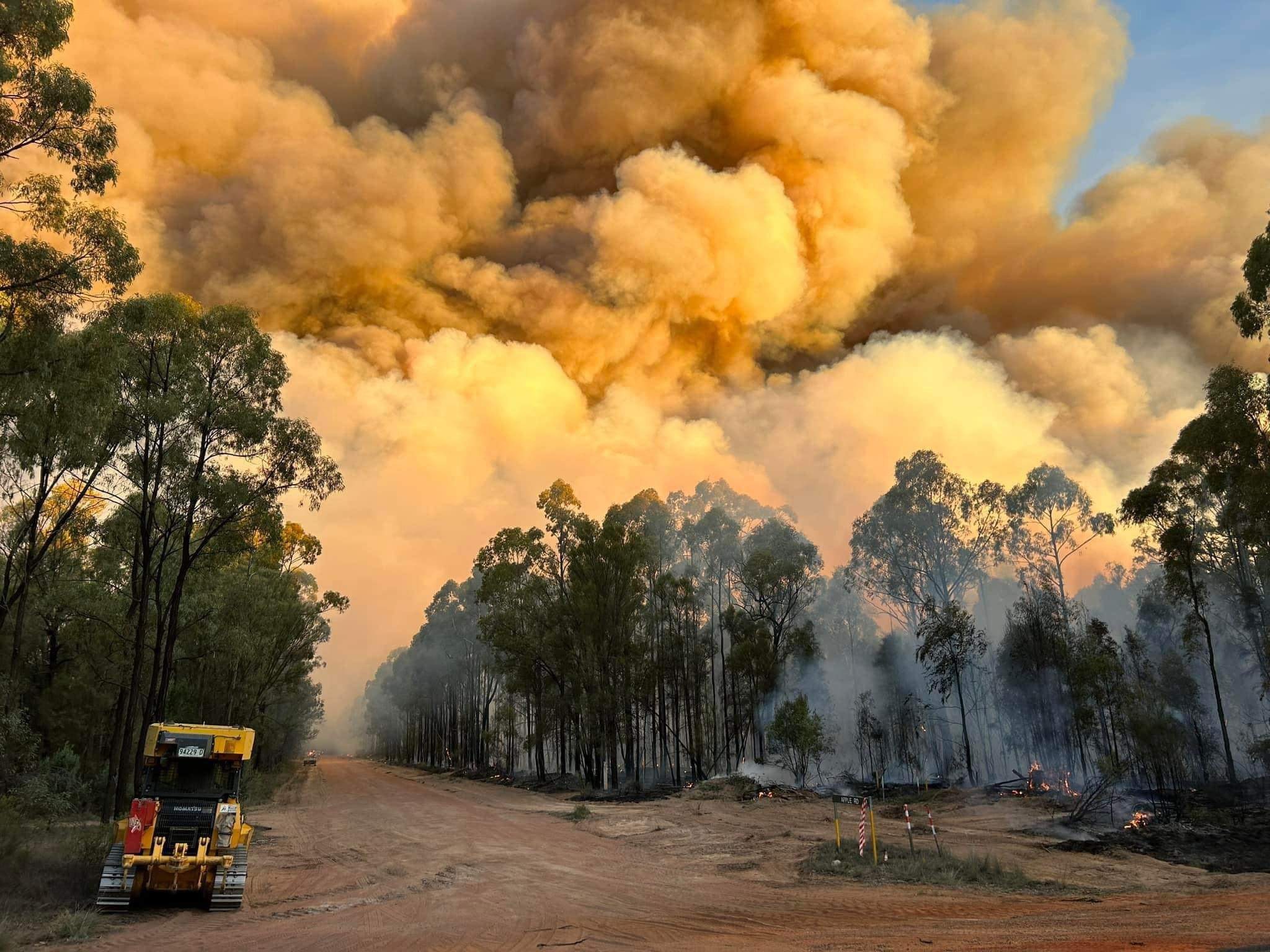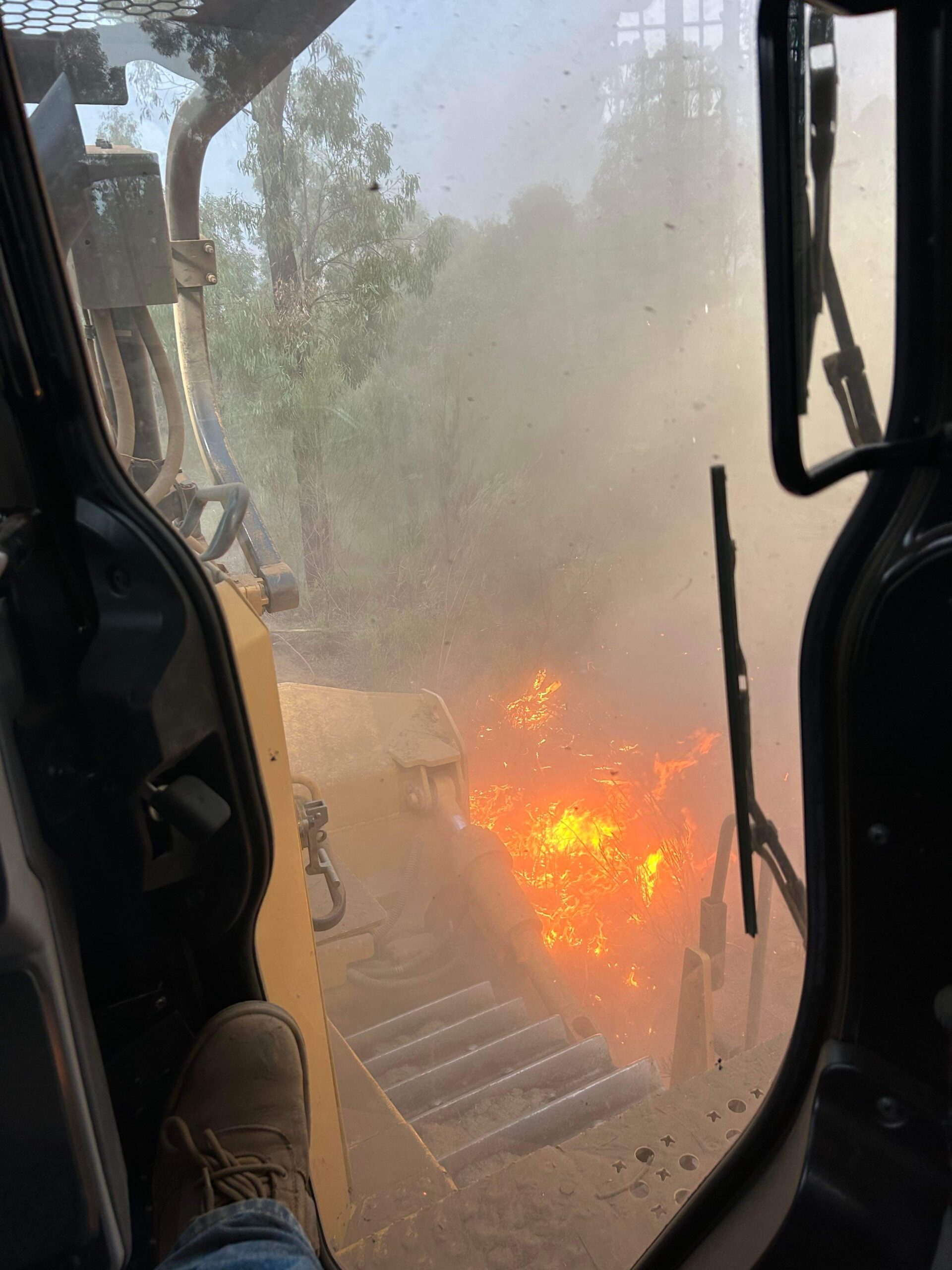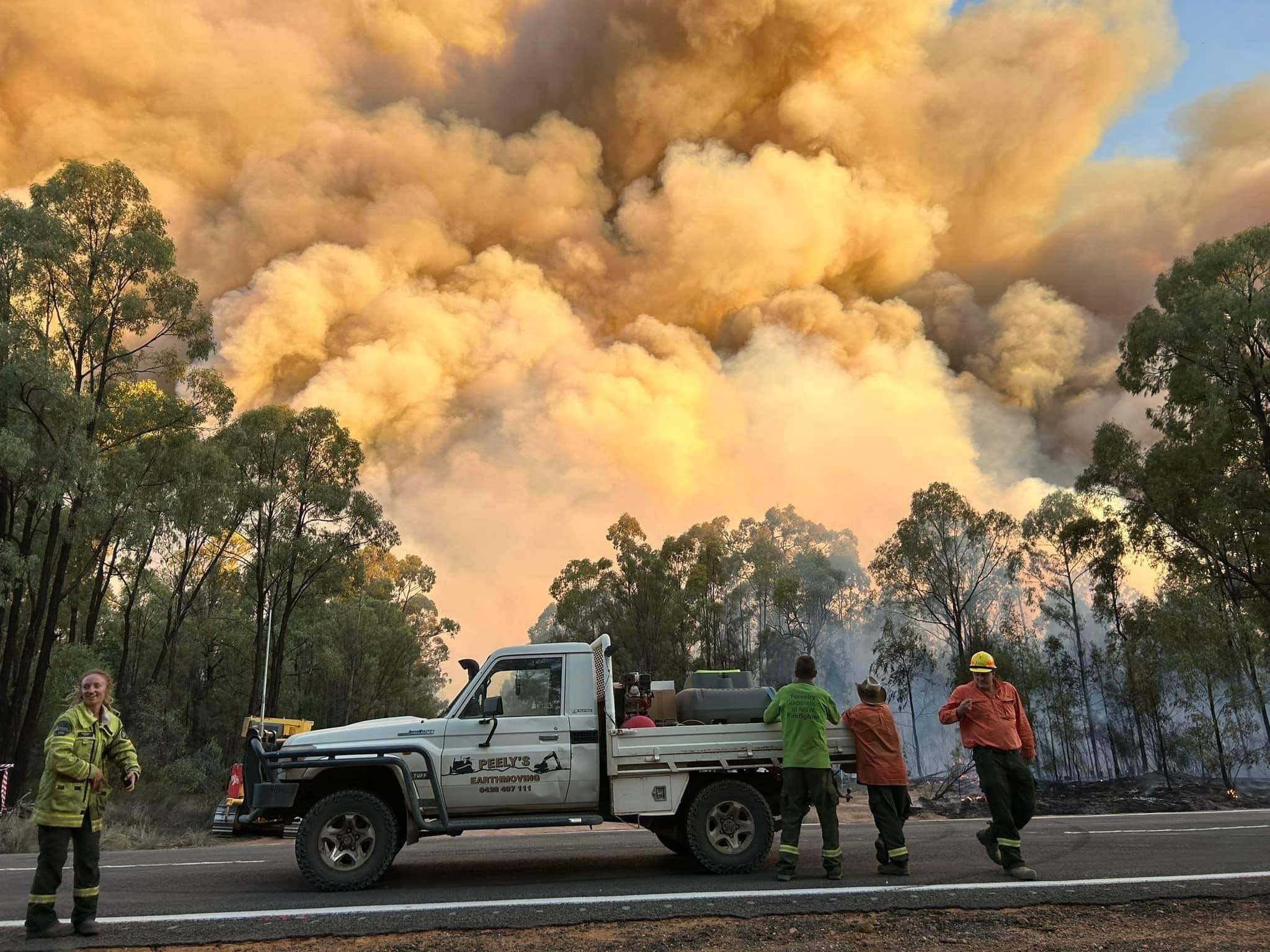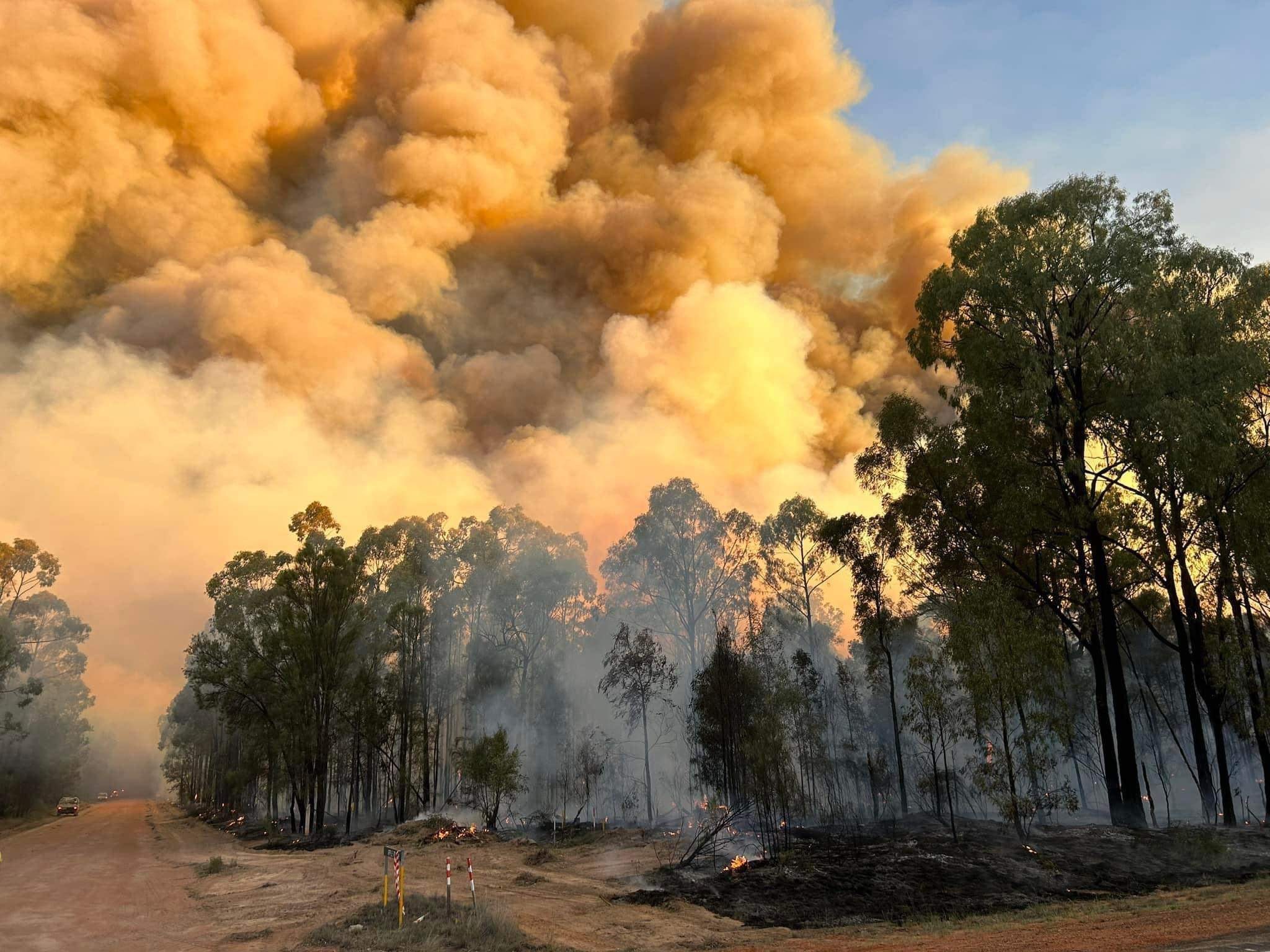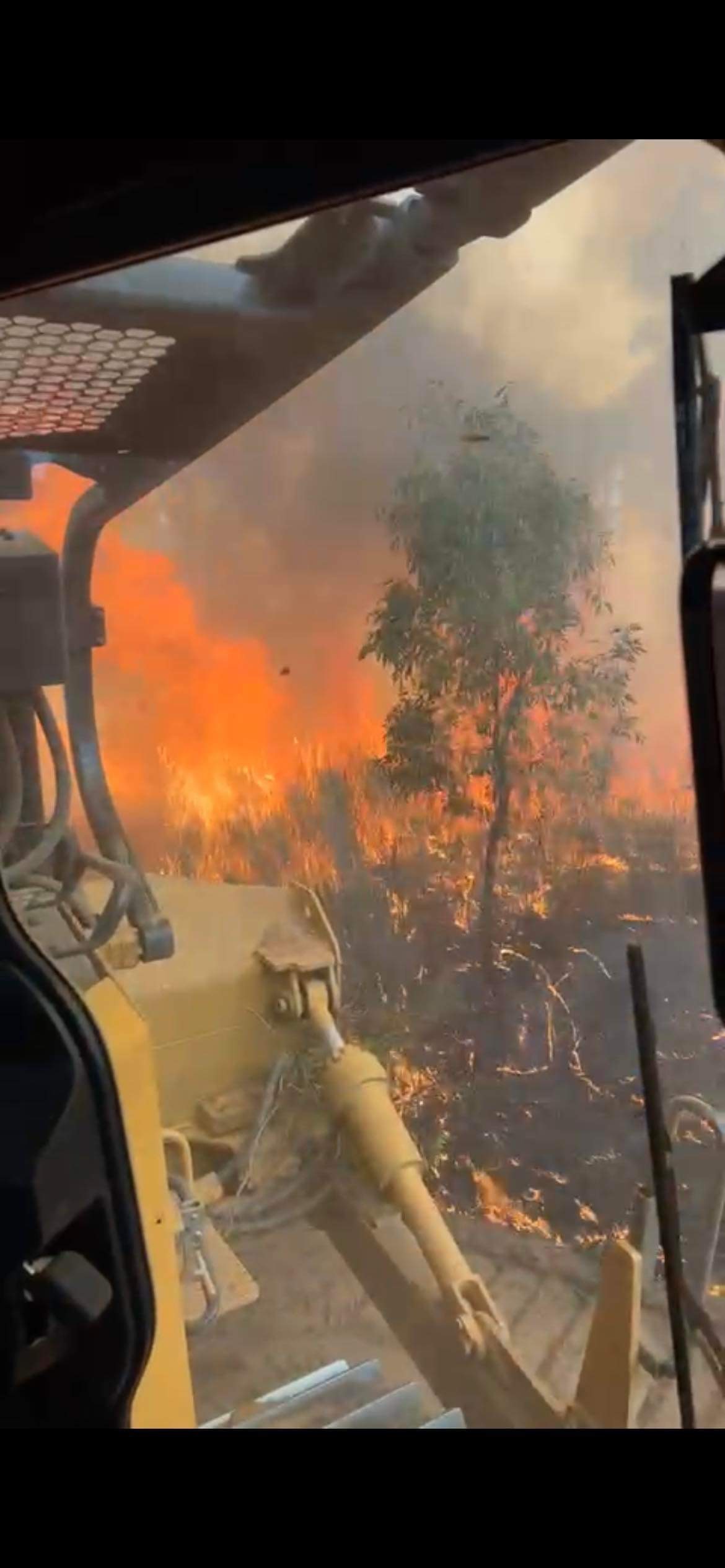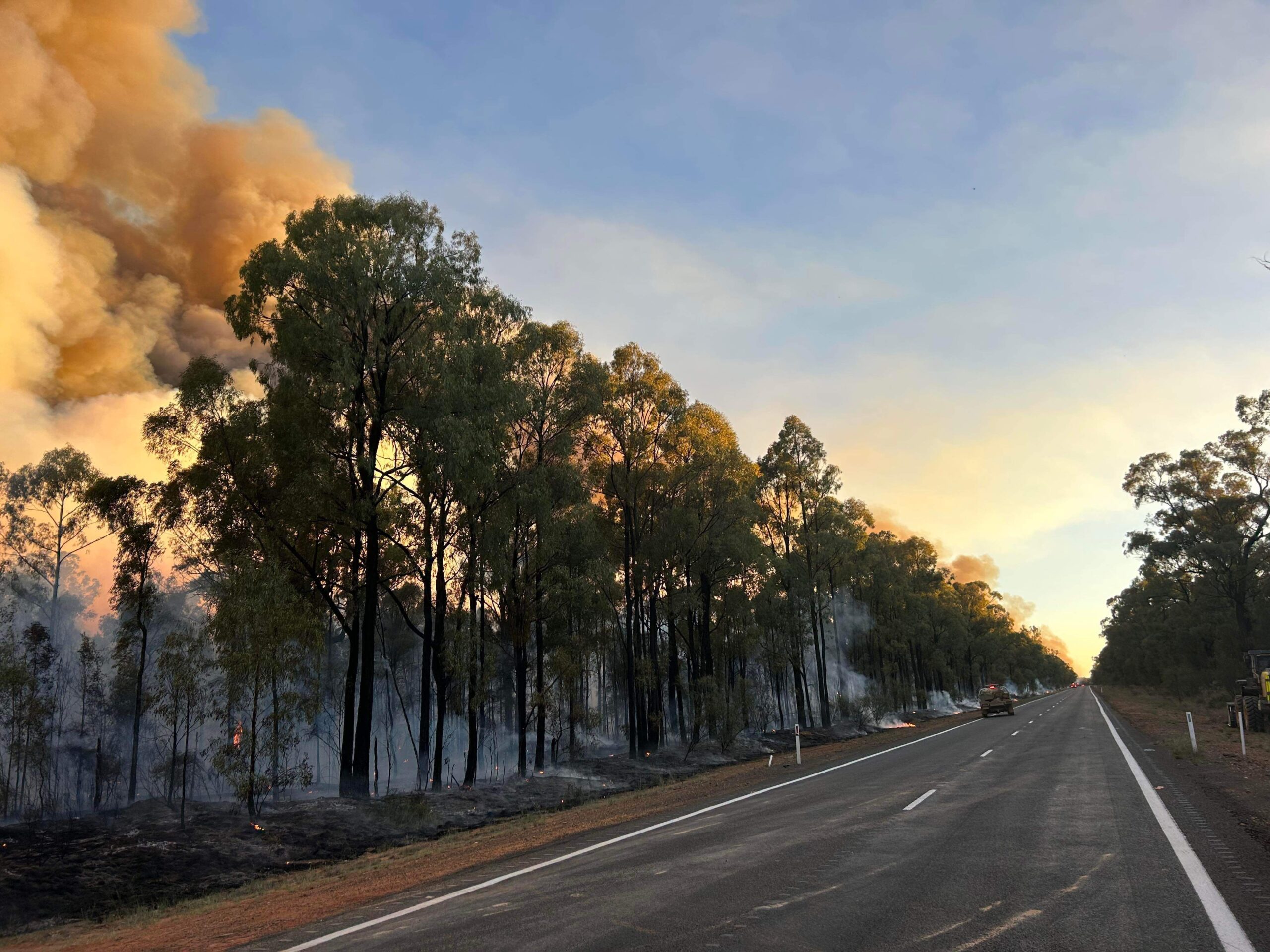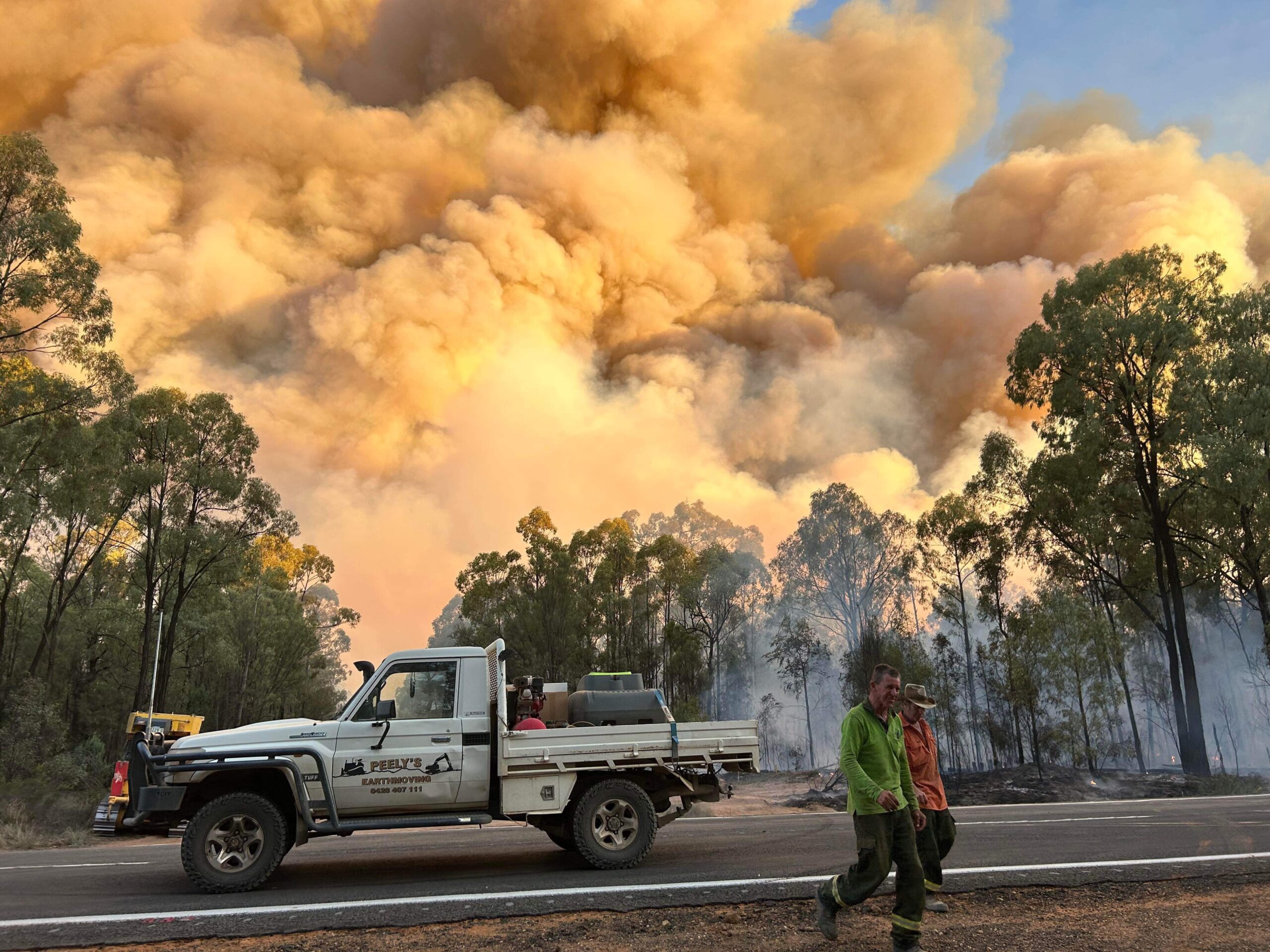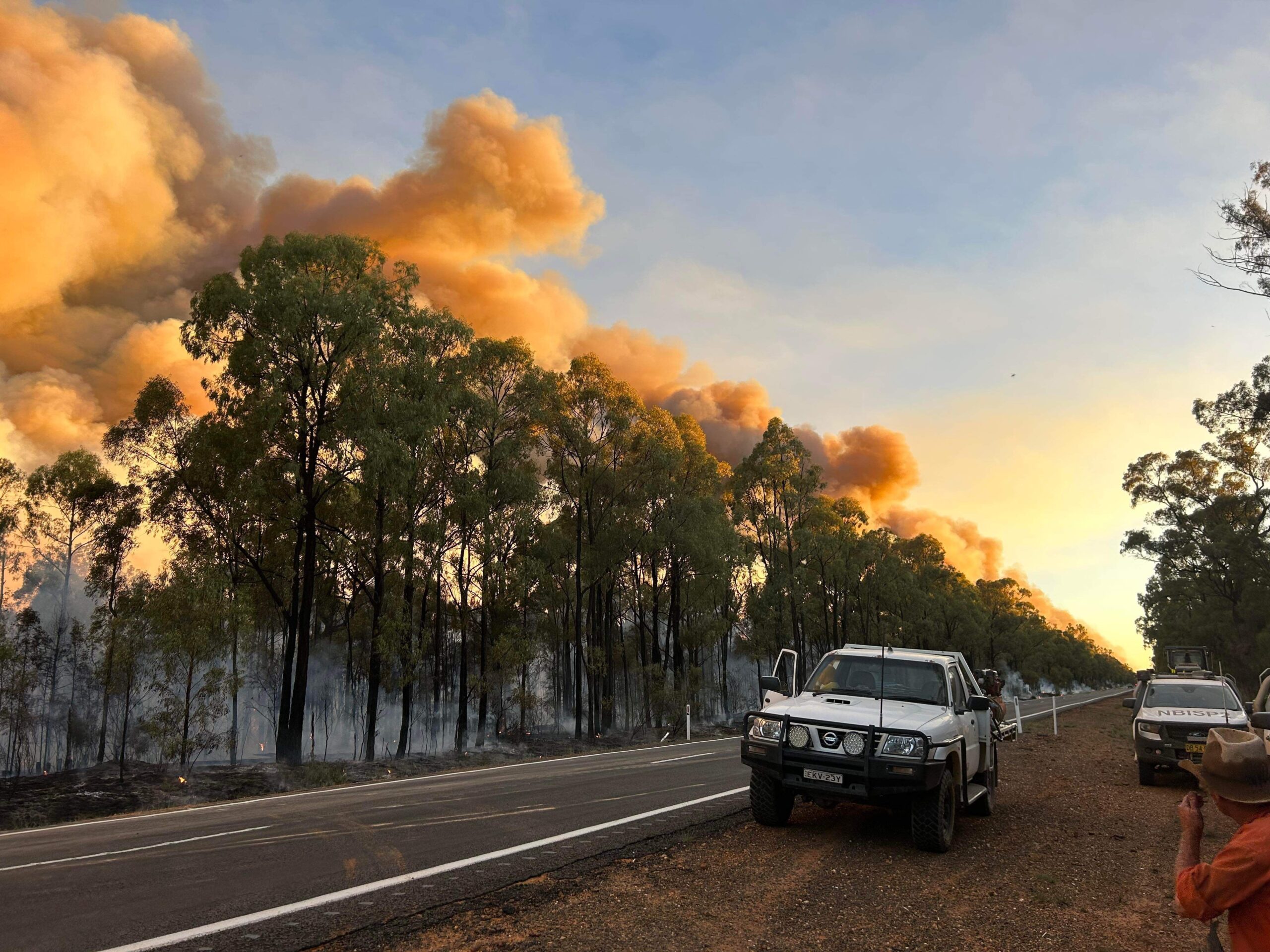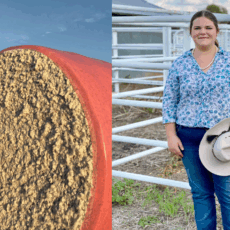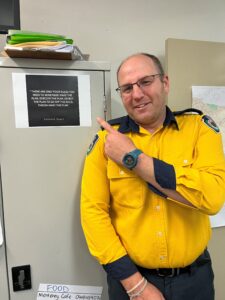
Paul Dabros makes a light hearted reference to the ‘four rules.’
Paul Dabros and Bronwyn Waters were two of the visiting district Rural Fire Service (RFS) members who responded to the Duck Creek Pilliga Forest fire declared a state of emergency on December 8, 2023.
Paul acted as planning officer for this emergency, traveling from Bega on the far south coast, and was tasked with working out and implementing strategies to contain the fire in the future.
“The planning team looks after what we’re doing tomorrow, and the next day,” said Paul.
“As a bushfire planning team, we remember a light hearted philosophy that gets us through the tough times; There are only four rules you need to remember: Make the plan, execute the plan, expect the plan to go off the rails, throw away the plan – Leonard Snart.
“We look at broad containment areas of fire trails and using heavy plant personnel like ‘dozers and graders to bring them up to a standard that we can then implement a back burn-off and plan the resources around making that back burn happen tomorrow.”
Both RFS members worked side-by-side at the Narrabri headquarters to respond to what they described as an “unpredictable” scenario with unusual fire conditions.
Having experience based around the Sydney Forest fringes where he deals with the threat of inter-urban exposure of houses closer to the bush, Paul was expecting to develop and implement a broad containment strategy.
“I was expecting the fire to act pretty well like a fire does, this fire was different,” said Paul.
“We had a lot of fire conditions that weren’t normal to the typical fire I was used to on the coast.
“It’s a good learning experience but very challenging- I do a lot of them around the state and this one was already a good learning curve, but it’s always rewarding to see a fire early on and then see the end of it.”
The difficulty came at night, when a reprieve in heat and higher humidity would normally allow crew to get ahead of containment and put control measures in place.
“What actually happened was that the night-time fire behaviour was very erratic, usually humidity comes up and temperature drops, but the type of conditions we were experiencing during the night when the fire broke out were very high temperatures, very low humidity, and very erratic behaviours,” said Paul.
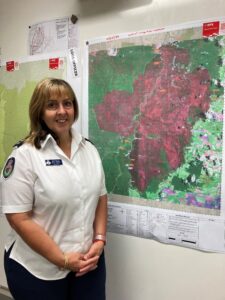
RFS incident controller Bronwyn Waters.
Tamworth district manager Bronwyn Waters received the call on December 8 and came to Narrabri early next morning to assist as the incident controller. She described fire behaviour as getting more intense and unpredictable through the season.
“The fire seasons are getting worse, we used to get more respite during the night, but we’re not seeing that anymore, which is worrying,” said Bronwyn.
“The 2019/2020 fire season was a crazy year, and I was in Glen Innes for the majority of that, I don’t ever want to see that season again. I don’t think it’s going to be as bad as that, but we are going to see more big fires and crazy fire behaviour.”
Paul’s broad containment strategy included monitoring fire trails, reinforcing containment lines, and utilising airstrike as conditions became exceedingly dangerous to fight on the ground.
“It was a good learning opportunity for me – it was different fire behaviour and vegetation to what I’m used to – the strategies that I’m used to putting in place didn’t quite work so I had to adjust myself to be able to try and contain the fire.
Paul’s plan was heavily assisted by planned aircraft 737 and C130 large air tankers (LATs), which made their way from Sydney and unloaded 10, 000-litre loads of fire retardant per drop into the bush, on control towers and homes, with hopes of reducing fire behaviour enough that the ground crew could jump on it.
Seems simple enough, but you know what they say about the best-laid plans…
“That didn’t work a whole lot of time because the fire was so intense it would spot over the line.
“Hot embers would blow over the line and start a new fire in front of it, or smoke would lay over in the wind and cover the area where we were trying to lay retardant – then we couldn’t even get planes in to drop those lines.”
Bronwyn recollects one such evening around December 19 when ‘all hell broke loose.’
“I remember one evening we planned to conduct a back burn, but that night other elements came into it, stronger winds that came down and mixed in and ended up threatening properties,” said Bronwyn.
“The crew had to forget about the backburn and protect the properties, that’s when we went into emergency warnings and it became quite stressful – we were worried that we were going to lose properties or even life, and it was difficult because it was at 11.30 pm at night.
“That’s when it went a bit crazy, then the next day it took another run about 26km in a straight line down to the south – it seemed quite bizarre – a lot of it wasn’t weather driven in some ways it was fuel driven so it ran rapidly in a short amount of time and threatened properties.”
One could assume that the rain which followed would have been welcome, but along with it came access challenges as tracks became boggy, and tree falls became dangerous, so the team relied on air support at this point.
On the nights it ran quickly, Bronwyn would often get a call at 2.30 am from nightshift and would report in to help efforts.
“It wasn’t doing what we expected, and it was like day one all over again,” said Bronwyn.
“We had a picture in our mind as to how we were going to contain the fire and control it and it exceeded all those containment lines.
“It jumped fairly major containment lines fire trails and main roads like the Newell Highway multiple times, and if it’s jumping those then it’s really hard to get it under control and all you can do then is protect property, wait until the right weather then look at how we are going to contain it.”
In such perplexing scenarios, all the team could do was come back to the drawing board and try again, something that happened many, many times.
“When that happens you just start again, you must because you can’t just give up,” said Bronwyn.
“In some ways, we’ve got to think about how lucky we were that no houses were lost and no lives that’s a win.
“You concentrate on positives and just keep working at it.”
With over 20 years of RFS and firefighting experience, Paul considers firefighting to be more about control, containment and future planning than battling it face-to-face with a hose.
“You don’t contend with Mother Nature – you can try, but at the end of the day when it all goes to an emergency plan, we are there just to protect life and property.
“Sometimes we can’t do anything about it and are just steering it – on the east coast of Australia we are pretty lucky because we’ve got the great Australian fire break which is the ocean and usually it stops the fire…” Paul laughed.
“We haven’t lost one to New Zealand yet.”


